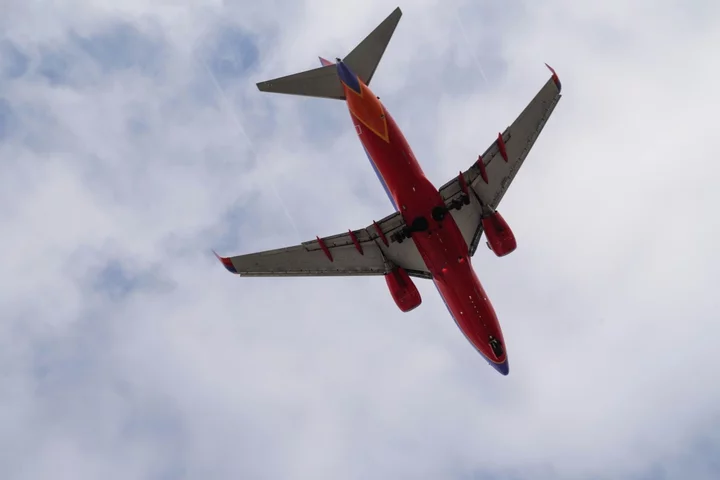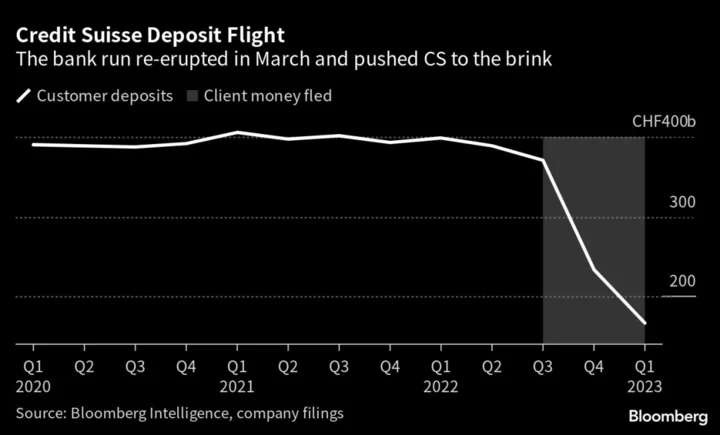Airlines and aircraft engine makers are racing to identify bogus spare parts that have infiltrated the global fleet via an obscure UK supplier, a potentially costly and complicated forensic endeavor affecting the world’s most widely flown passenger jets.
Southwest Airlines Co. said Friday that it had removed two “suspect parts” traced to closely held AOG Technics Ltd. from one of its Boeing Co. 737 aircraft, becoming the first major carrier to publicly disclose doing so. Hours earlier, CFM International Inc., the joint venture of General Electric Co. and Safran SA that makes the engines for many older-generation Airbus SE A320 and Boeing 737 aircraft, said parts with fraudulent documentation had been put on 68 of its power plants.
The widening scandal has shaken an industry where safety is the guiding principle, with exacting standards for aircraft manufacturing and maintenance that demands each component be verified. Regulators, airlines and other industry players have been scouring their records to hunt down the suspect components sold by AOG, the obscure supplier at the center of the crisis.
CFM, the world’s largest jet-engine manufacturer, filed a lawsuit in the UK against AOG Technics. The suit seeks an injunction to force AOG to provide more information to aid the aviation industry’s search for suspect components. It also seeks to recover any parts in AOG’s possession purported to be from CFM or GE.
In response to questions from Bloomberg News, which first reported on the AOG case, Southwest said that two low-pressure turbine blades were the components it pulled from one of its engines. The carrier took “precautionary and immediate measures” to remove them based on the fact they were supplied by AOG.
The parts were found in an engine on a Boeing 737 NG, an older version of Boeing’s most popular model. CFM supplies engines to both the Airbus and the Boeing planes. In the last decade, both models have undergone a technical upgrade with new engines — the Airbus A320neo and the Boeing 737 Max — that use different powerplants not affected by the AOG case.
Still, the CFM56 model is the most widely used jet engine in service today. It has been used on single-aisle planes for decades, with more than 33,000 engines delivered to more than 600 operators worldwide. The single-aisle Airbus and Boeing jets are used by millions of passengers each day and by most airlines, mainly on short-haul flights.
To date, CFM and GE Aerospace have found 78 documents they say are falsified and which cover 52 CFM56 engine part numbers, along with two faked records for CF6 components. AOG has no direct affiliation with CFM or its partners.
The European Union Aviation Safety Agency earlier this week determined that the components backed by forged documentation included turbine blades, a critical component of an aircraft’s propulsion system.
Airbus has said it’s aware of reports surrounding AOG, while Boeing has deferred to regulators on the topic.
Representatives for AOG could not be reached for immediate comment. Based on the UK’s Companies House records, AOG was established in 2015. The supplier of parts to third-party engine repair shops was created by Jose Zamora Yrala, who hasn’t responded to emails or phone calls seeking comment.
“Safety is our first priority, and we are taking aggressive legal action against AOG Technics to accelerate the industry’s ability to identify parts sold by this third-party with falsified documentation,” a CFM spokesman said in a statement.
No incidents linked to the suspect parts have been identified, CFM and GE have said. EASA said last week that while the parts of questionable origin are “a matter for concern, to date there have been no reports of problems resulting from the suspect unapproved parts.”
Aircraft manufacturers, airlines and engine makers go to great lengths inspecting their equipment to identify faults or fatigue, a practice that has contributed to ever-lower incidents in an industry priding itself as being among the safest modes of transport. When unforeseen faults to crop up — even those that are not deemed a safety issue — they can lead to lengthy and costly repairs.
--With assistance from Albertina Torsoli.
Author: Ryan Beene, Mary Schlangenstein and Siddharth Philip









